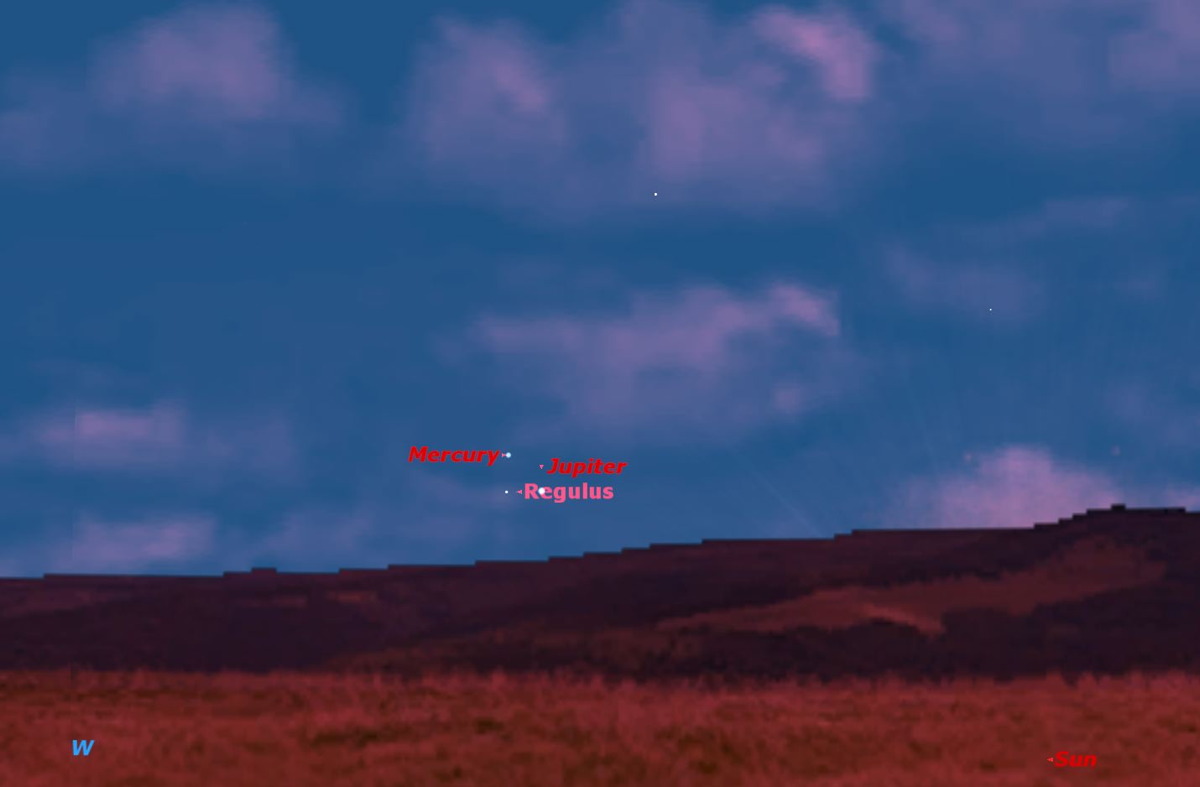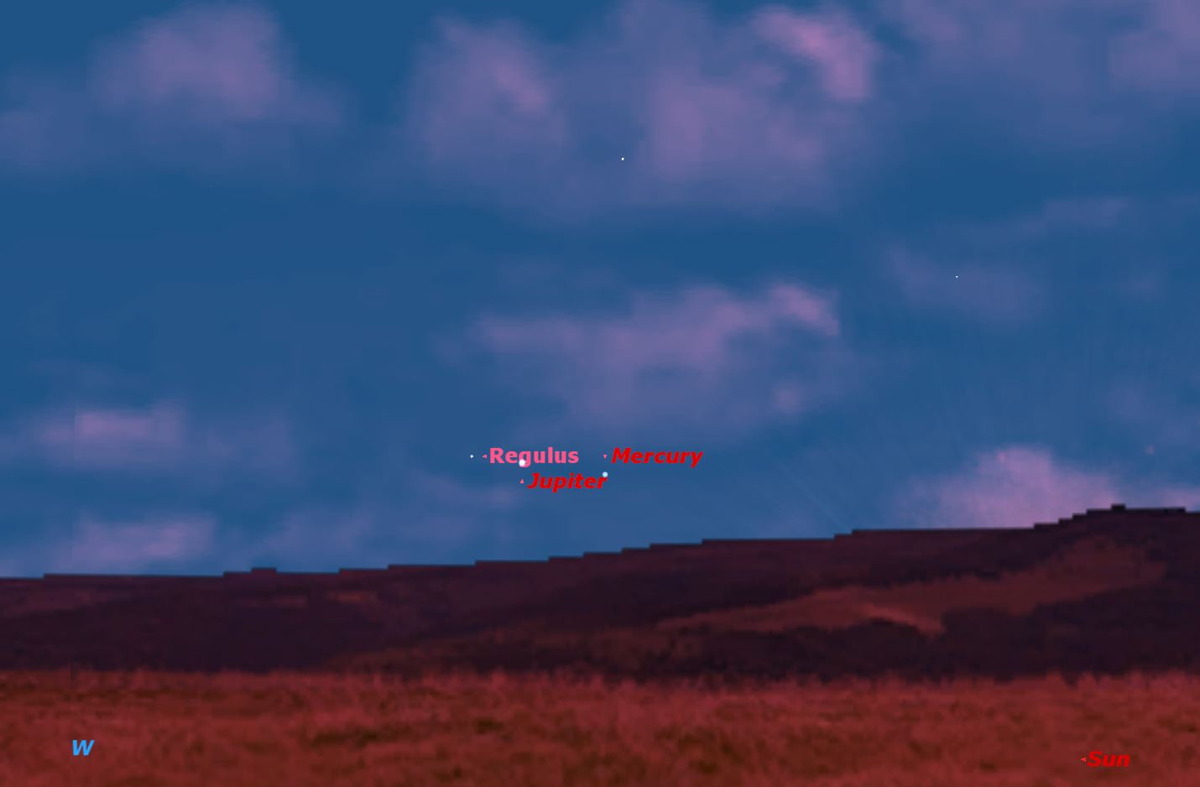See Mercury, Jupiter and Bright Star Form a Celestrial Trio at Sunset

Over the next few nights, observers with clear skies and a great view of the low western horizon may be able to observe a triple conjunction between the planets Mercury and Jupiter and the bright star Regulus.
Look for this celestial trio tonight (Aug. 7), with Jupiter, Regulus and Mercury aligning to form an equilateral triangle in the western night sky that measures about 1 degree per side. Mercury will be on top, Regulus to the left, and Jupiter to the right.
Currently, Jupiter is the brightest of the three, at magnitude –1.7. Mercury is shining with a magnitude –0.7, while Regulus is the faintest of the three, with a magnitude +1.3. Brightness in astronomy is measured on an upside-down scale where the faintest stars visible to the naked eye are magnitude 6, the brightest stars are around magnitude 0, and really bright objects like the sun, moon, and planets have negative magnitudes. [Related: Best Planets to See This August]
All three of these objects will be very bright, but will be masked by the brightness of the sky just after sunset. If you wait until the sky has darkened, they will probably be too low to observe.
Three nights later, on Monday (Aug. 10), Mercury will have moved away to the left, but Regulus and Jupiter will have moved closer to each other, less than half a degree apart. This conjunction will be very hard to observe because of its low altitude.
This will probably be your last chance to observe Jupiter before it passes behind the sun on Aug. 26. Look for it in the morning sky in mid-September.

Jupiter, Mercury and Regulus actually began their celestial display earlier this week on Wednesday (Aug. 5). At the time, the two planets and star formed a straight line less than 4 degrees long, fitting comfortably in the viewing field of a good pair of binoculars.
Get the Space.com Newsletter
Breaking space news, the latest updates on rocket launches, skywatching events and more!
Editor's note: If you capture an amazing view of Jupiter, Mercury and Regulus that you'd like to share with Space.com for a story or gallery, send images and comments in to: spacephotos@space.com.
This article was provided to SPACE.com by Simulation Curriculum, the leader in space science curriculum solutions and the makers of Starry Night and SkySafari. Follow Starry Night on Twitter @StarryNightEdu. Follow us @Spacedotcom, Facebook and Google+. Original article on Space.com.
Join our Space Forums to keep talking space on the latest missions, night sky and more! And if you have a news tip, correction or comment, let us know at: community@space.com.

Geoff Gaherty was Space.com's Night Sky columnist and in partnership with Starry Night software and a dedicated amateur astronomer who sought to share the wonders of the night sky with the world. Based in Canada, Geoff studied mathematics and physics at McGill University and earned a Ph.D. in anthropology from the University of Toronto, all while pursuing a passion for the night sky and serving as an astronomy communicator. He credited a partial solar eclipse observed in 1946 (at age 5) and his 1957 sighting of the Comet Arend-Roland as a teenager for sparking his interest in amateur astronomy. In 2008, Geoff won the Chant Medal from the Royal Astronomical Society of Canada, an award given to a Canadian amateur astronomer in recognition of their lifetime achievements. Sadly, Geoff passed away July 7, 2016 due to complications from a kidney transplant, but his legacy continues at Starry Night.










